Reviews
Marta Minujín’s Trippy New Museum Installation Predicted Today’s Immersive Art Craze. It’s Way Weirder Than That, Though
The classic installation transfixed Buenos Aires when it debuted in 1965.
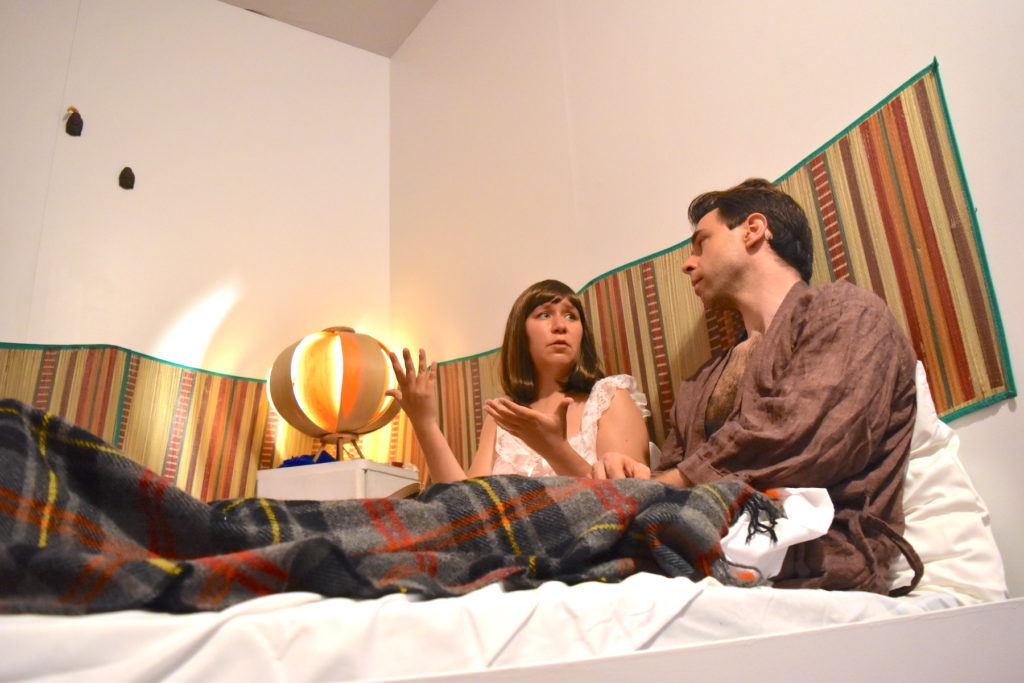
The classic installation transfixed Buenos Aires when it debuted in 1965.

Ben Davis

“Menesunda Reloaded,” the groovy recreation of Argentine artist Marta Minujín’s seminal installation La Menesunda, has just opened at the New Museum. It’s being pitched as a distinguished precursor to today’s rage for immersive experiences—and the experience of it definitely feels very contemporary.
For one thing, you must wait in a line to enter. Only a few people can be inside at once. What, after all, could feel more contemporary than the experience of waiting in line for access to the latest “exclusive” pop-up environment?
The lines of well-heeled Argentine culturati that snaked around the block to get into its 1965 debut in Buenos Aires have become a part of the legend of La Menesunda. The installation’s interconnected warren of themed chambers took Minujín and a team of collaborators three months to create, and while it was only open for 15 days, it became a media sensation. Its success cemented the then very young artist’s reputation as an enfant terrible in Argentina and beyond in that relatively open mid-‘60s moment, just before the country relapsed into dictatorship the next year.
“The problem was that I was so famous by the time I was 22 years old that I could not even walk down the street,” Minujín recalls in the catalogue. “Then the military took over in Argentina and people forgot the whole thing. Many people disappeared. Things got bad. But, at a certain point, I was hugely popular—like Britney Spears.”
It’s uncertain whether her fame will ever return to Britney Spears-level, but her renown is secure these days. Minujín had a big moment in the international art spotlight recently, when her monumental work El Partenón de libros—a huge version of the Parthenon originally made in 1983, the year of Argentina’s return to democracy, constructed of books that had been censored during the period of dictatorships—was recreated as the much-photographed centerpiece of last year’s dOCUMENTA in Kassel, Germany.
But La Menesunda, with its more early-‘60s aura of tactile hedonism and media experimentation, actually better represents what made Minujín’s reputation.
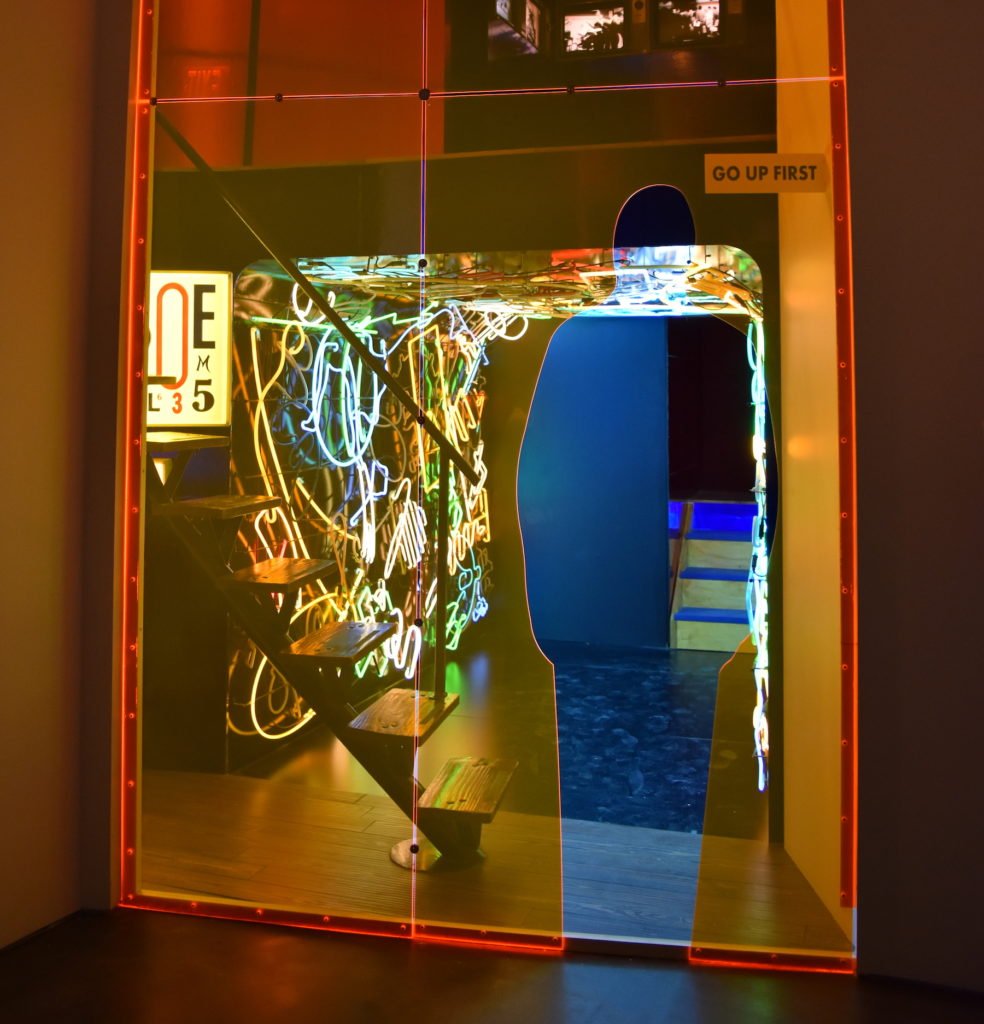
Entrance to Menesunda Reloaded at the New Museum. Image: Ben Davis.
The phrase “La Menesunda” is Argentine slang for a chaotic, confusing situation, and the installation set out to push the limits of what its contemporaneous audience—accustomed to a more churchy style of high culture—would bear. It immediately puts you into an environment that evokes urban life: You enter a chamber of multicolored neon, and climb stairs to a passage with a bank of TVs playing black-and-white news programming.
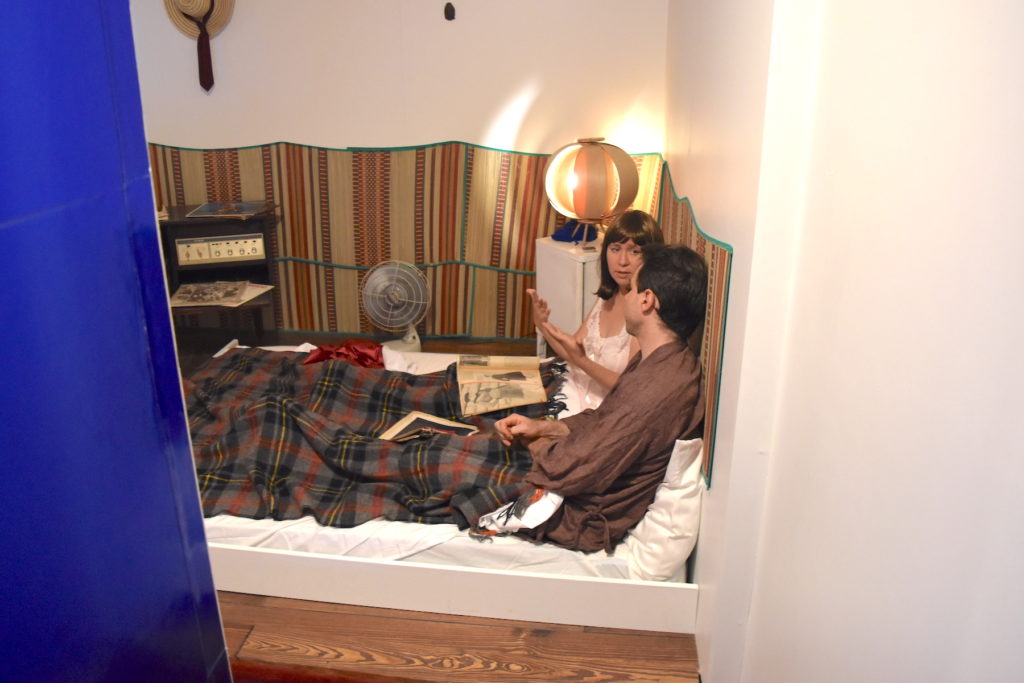
Two performers in Menesunda Reloaded at the New Museum. Image: Ben Davis.
Then, you swing through a bedroom decked out in pointedly low-key period decor. A couple of live actors are languishing in bed, half dressed and chilling out, murmuring to each other, listening to the Beatles.
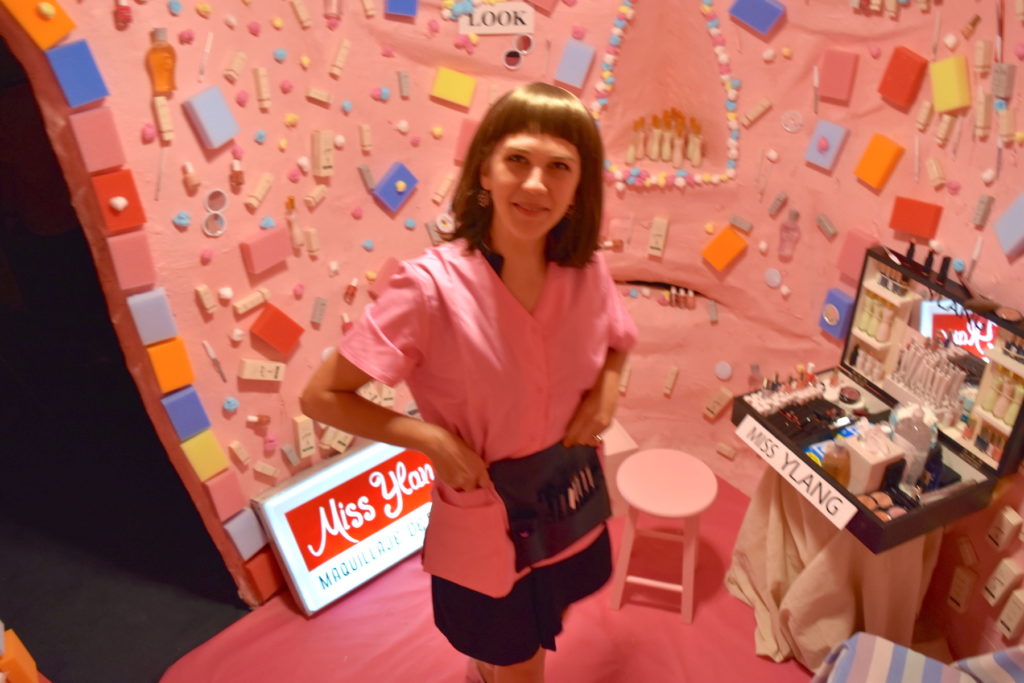
Descending into the makeup room in Menesunda Reloaded at the New Museum. Image: Ben Davis.
From there you descend stairs into a salon, where you can get your hand painted by a pink-clad attendant. The walls of the spherical chamber are encrusted with bottles of nail polish and other makeup instruments, and it’s all very candy-colored and knowingly kitschy. (Though it’s worth mentioning that this room, called the Woman’s Head, represents a not-exactly-sisterly statement about the gender politics of its day: “I hated housewives,” Minujín says in the catalogue. “I wanted to tell them that all they had in their heads was makeup.”)
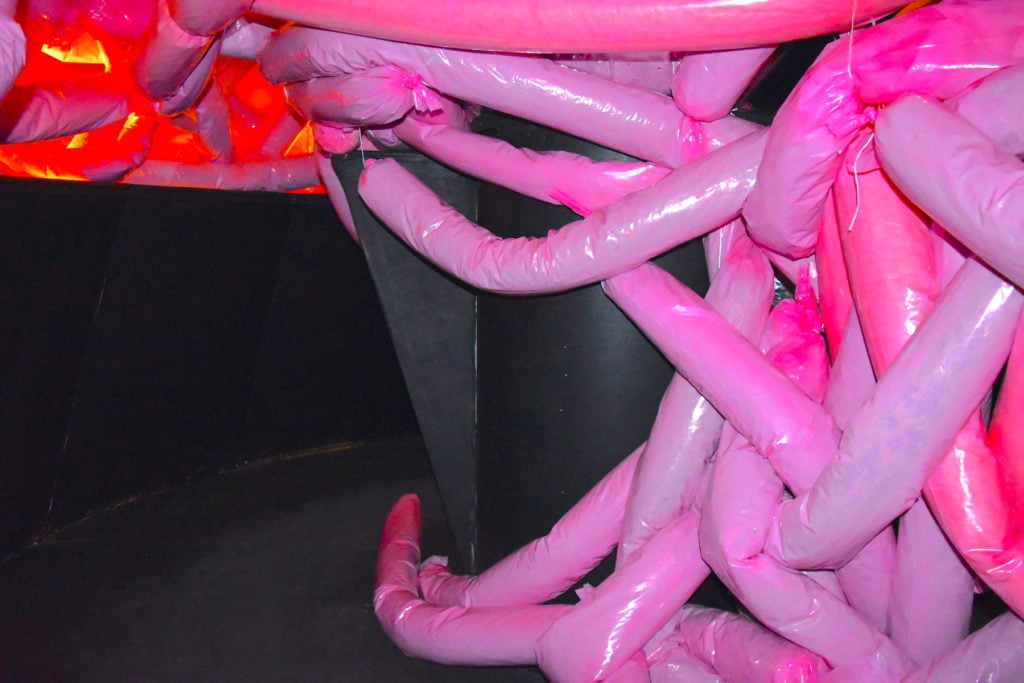
The intestine room in Marta Minujín’s Menesunda Reloaded at the New Museum. Image: Ben Davis.
You will then crawl through a room supposed to be a soft-sculpture version of intestines, and poke your head up through a hole to see black-and-white images of moody landscapes (in the original, they were from Ingmar Bergman films), or, if you take another passage, traverse a corridor lined with spiky sponges.
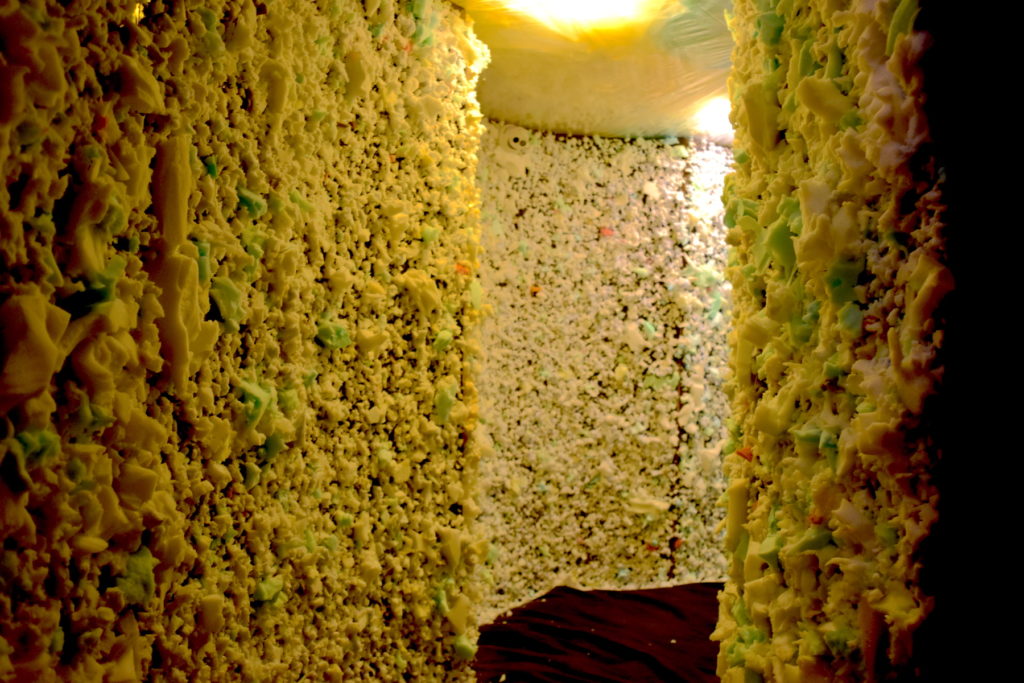
The hall of sponges in Marta Minujín’s Menesunda Reloaded at the New Museum. Image: Ben Davis.
You conclude in a mirrored octagonal room with a plastic booth at the center. Stepping on a pressure pad in the booth switches the lights to a nightclubby purple and turns on fans that fill the air with flurries of confetti, as if you have just won a prize at a DIY gameshow.
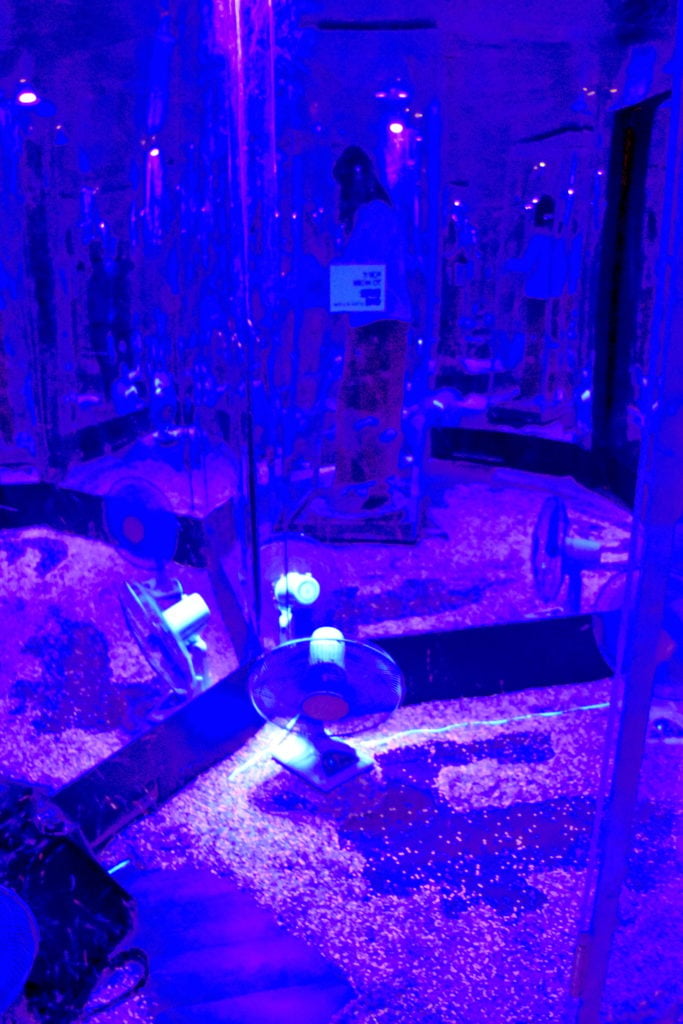
The mirrored confetti chamber in Marta Minujín’s Menesunda Reloaded at the New Museum. Image: Ben Davis.
With its arty fun-house vibe, the original La Menesunda was intended as a kind of thesis statement about art: What was aesthetically valuable, it proposed, was an intensified sense of now-ness, of experiencing your own present surroundings, rather than the hushed respect for the past that you found in an ordinary museum.
Correspondingly, when Minujín originally thought of touring La Menesunda, her vision focused on producing ever new, ever more unexpected challenges: An unrealized proposal for a 1966 New York version imagined a scaled-up installation with 10 floors of experiences, designed to accommodate 60 people at a time, full of live actions, light shows, art, and gadgetry.
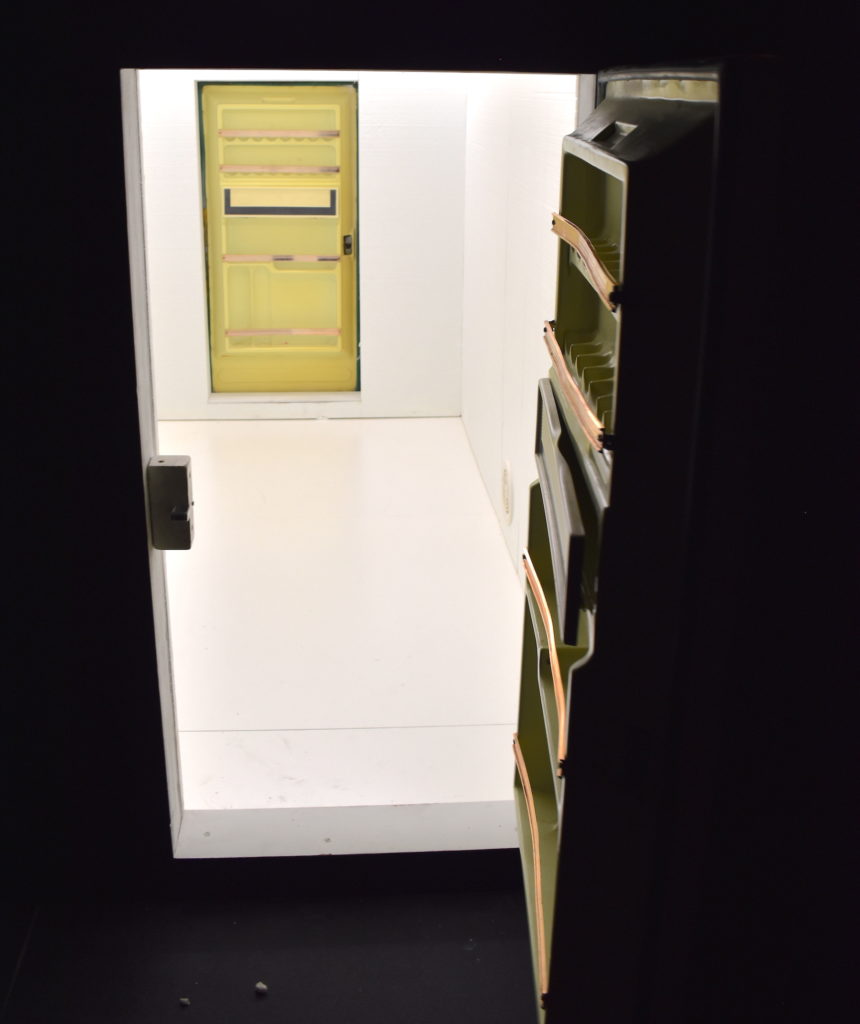
The refrigerator room in Marta Minujín’s Menesunda Reloaded at the New Museum. Image: Ben Davis.
Menesunda Reloaded at the New Museum is something else again, an as-much-as-possible faithful copy of the historical original—and thus a curious hybrid of Minujín’s “be here now” message and exactly the reverential museological aesthetic that was its foil, originally.
On the one hand, it’s all about raw tactility and scrappy amusement. But on the other, there’s a kind of time machine/nostalgia-trip quality at play.
The TV news feeds in the opening passage are not distressing present-day cable news, but Argentine TV from the ‘60s. The couple in the bed are dolled up in period style and reading magazines from the era. In one room, there’s a giant dial of a rotary telephone, which might as well be an artifact from an alien dimension in the post-smartphone epoch.
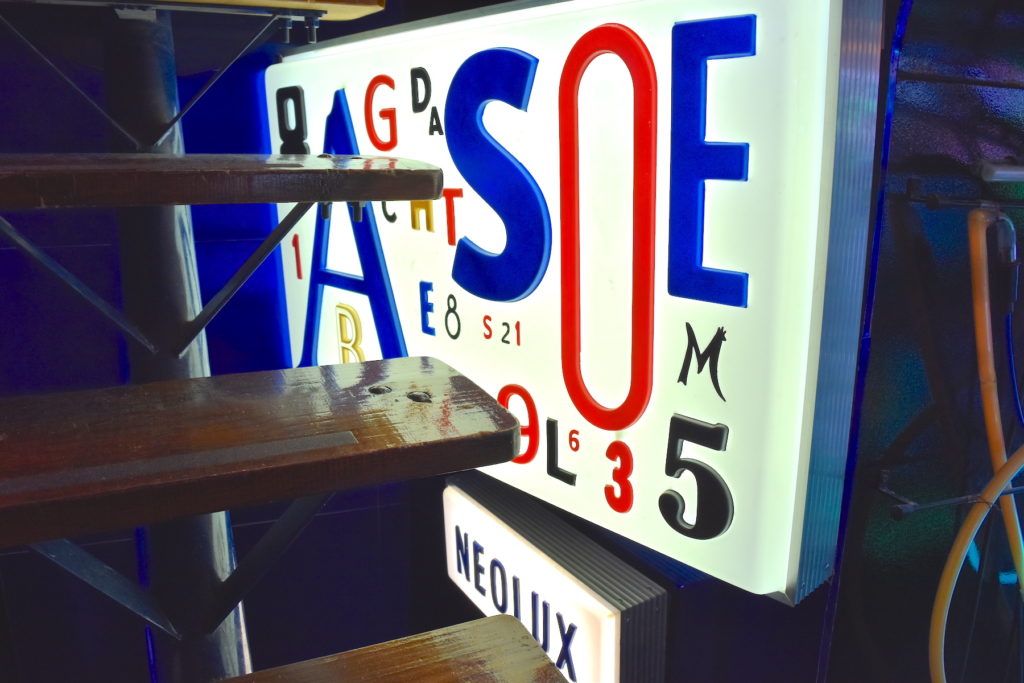
Detail of signage in Marta Minujín’s Menesunda Reloaded at the New Museum. Image: Ben Davis.
As a result you have to view Menesunda Reloaded as a kind of stereoscopic experience, its past-ness and its present-ness coexisting uncomfortably in your head as you traverse its rooms. I say uncomfortably, because there is a way in that the picturesque charm of its period vibe actually slightly shields you from its original cutting edge.
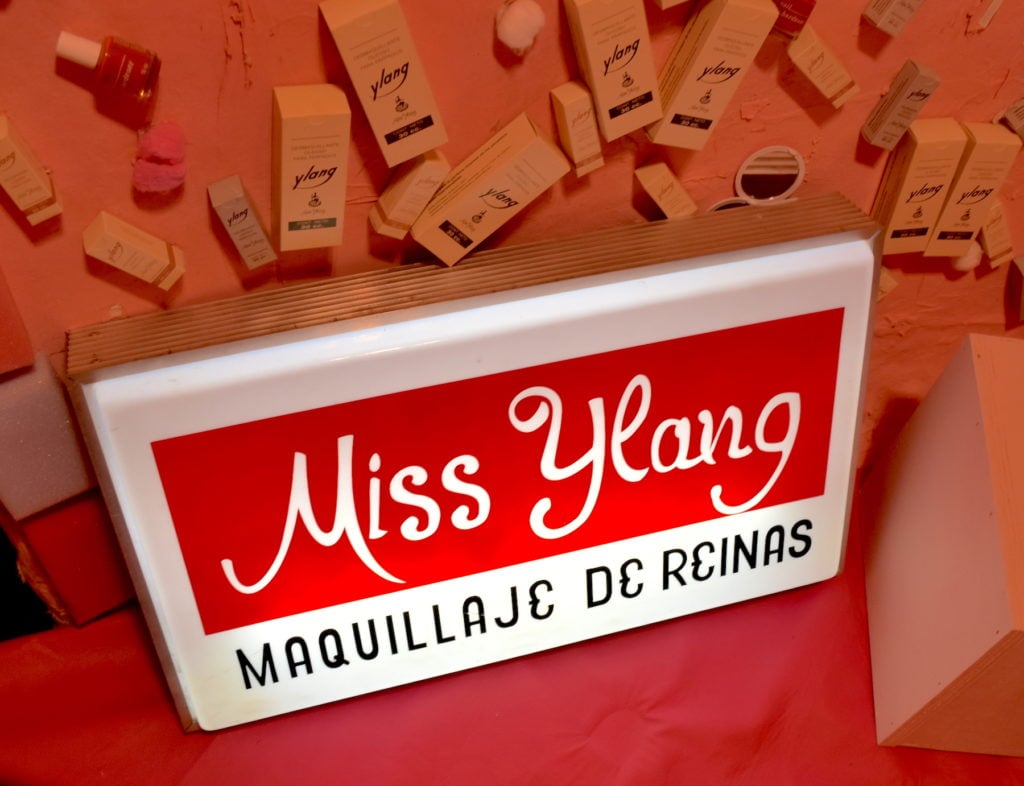
Detail of signage in the Woman’s Head room in Marta Minujín’s Menesunda Reloaded at the New Museum. Image: Ben Davis.
The new La Menesunda may be ever so slightly sanitized for the bodiless, photography-forward contemporary sensibility. The original, for instance, is supposed to have had a strong smell component. If there is the same odor blast of fried food—one of the installation’s components that Minujín said most signaled the original’s connection to street life in Buenos Aires, against the more sanitized bourgeois culture—it was too subtle for my nose to register on two trips through.
One thing that could easily get lost is how assaultive the original was meant to be. A brainstorming session for the project, cited by art historian Zanna Gilbert in the catalogue, makes it sound like the original inspiration was something like American Ninja Warrior meets Georges Bataille. Ideas included “Chinese torture moveable walls that crush the spectator,” “gymnastics room with obligatory gymnastics,” and a space where “in order to continue you pay to enter and shit in a black hole.”
The final version did not involve torture or pooing in a hole. But it was meant to be discomforting and literally challenging as well as tactile and engaging. The rooms are designed to make you work, to duck through doors, to go across unstable floors, to literally crawl in one case.
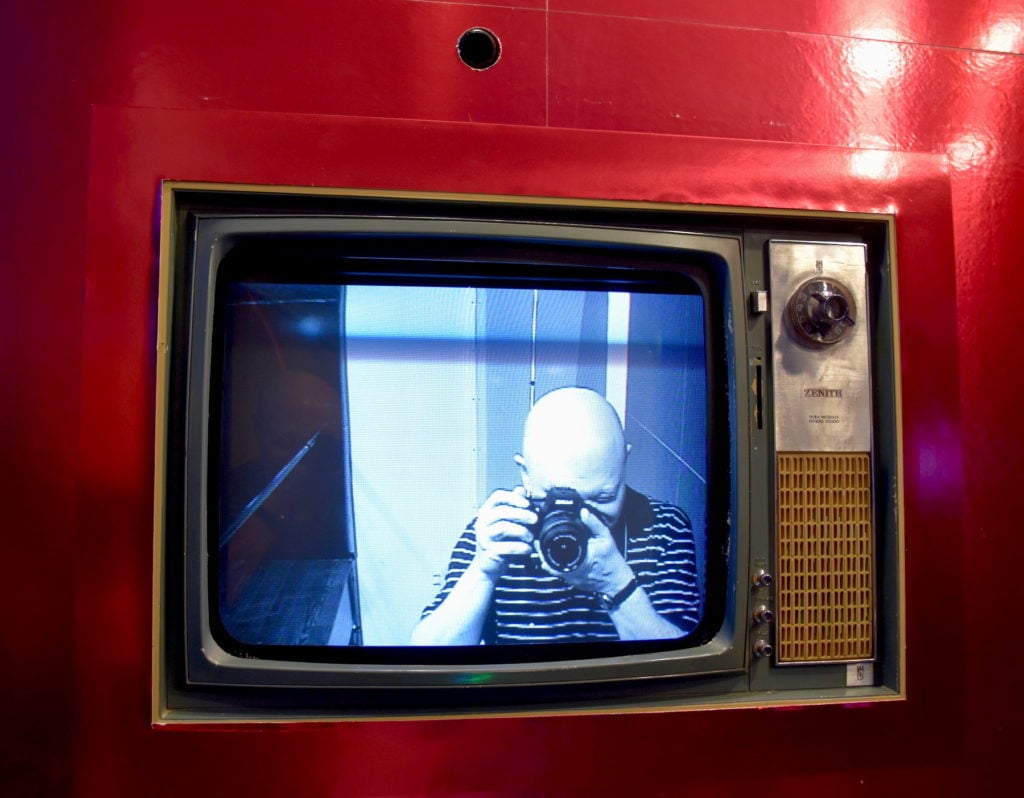
Closed circuit footage in Marta Minujín’s Menesunda Reloaded at the New Museum. Image: Ben Davis.
Among the first things you see on entering is a closed-circuit camera feed, broadcasting your own image back to you. Now you don’t think twice about seeing your own image broadcast live. In 1965, this was still a novelty with some estranging juice left in it. (Minujín would be inspired by Marshall McLuhan’s then-hot media theories, about how new media forms expanded the human sensorium.)
The couple idling in bed, a scenario with a hippie, free-love vibe, wasn’t simply a funny image. In a Catholic country with sharp debates over morality and politics, it set out to—and actually did—offend its stuffier viewers. A year later, when Catholic military dictator Juan Carlos Onganía took power, ordinances literally banned kissing in public in Buenos Aires, as well as short skirts for women and long hair for men.
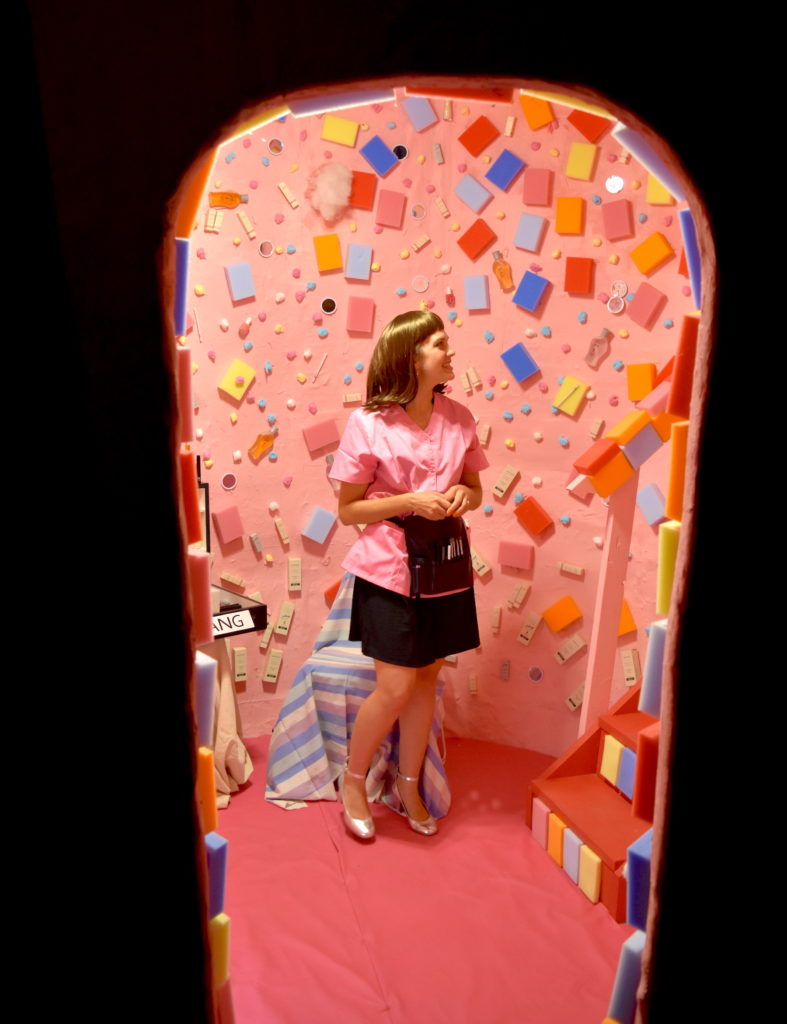
A guest being greeted in the Woman’s Head room in Menesunda Reloaded at the New Museum. Image: Ben Davis.
It’s definitely too much to frame such a work as if it were a righteously political intervention (though it’s worth saying that the experiments with “media art” of Minujín and her cohort broke ground that other artists would explore via more directly political engagements with new media during the darker years of the dictatorship). The spirit of La Menesunda was Puckish countercultural contempt for the mainstream art public.
For its ’60s audience, this prickly environment was an object of fascination. For its audience now, it will probably be something slightly less electric, because the kind of immersive art it pioneered has passed, via countless channels, into the mainstream of the consumer and entertainment landscape (in the catalogue, Minujín tells the curators that she thinks Disney stole some of her ideas for Epcot Center). Instead of fascination, it will evoke a more familiar kind of fun.
And after all, if you don’t have some fun in it, you’re probably not getting the spirit of the work. But, then again, if you don’t appreciate its original weirdness and wildness, you miss what’s coolest about it as well.
“Marta Minujín: Menesunda Reloaded” is on view at the New Museum, 235 Bowery, New York, June 26–September 29, 2019.